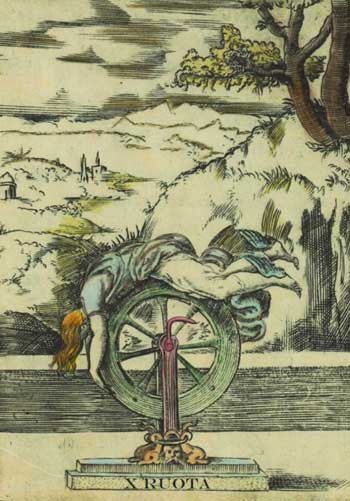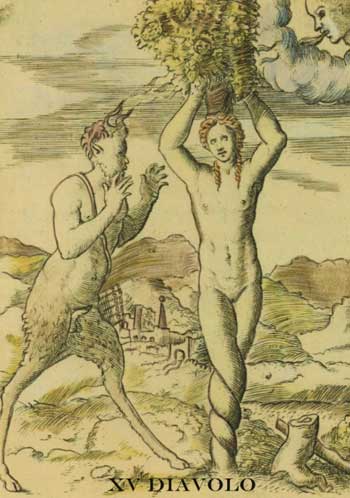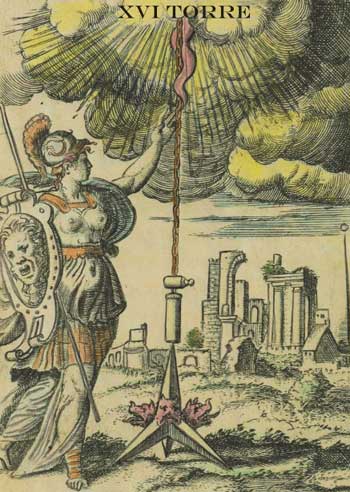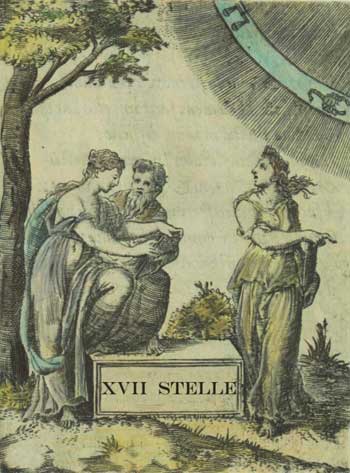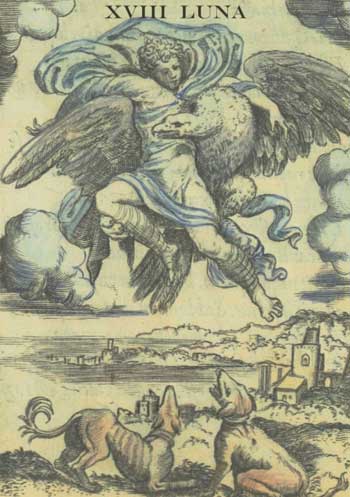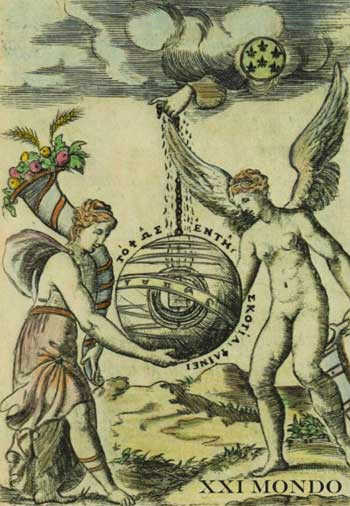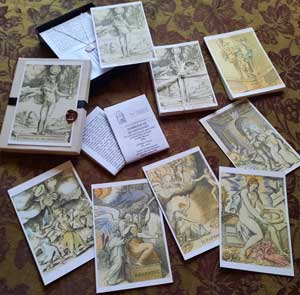 Symbolicae Quaestiones
is an impressive Major Arcana deck which draws from symbolic art that was created in the era of Tarot's emergence, during the Italian Renaissance.
Symbolicae Quaestiones
is an impressive Major Arcana deck which draws from symbolic art that was created in the era of Tarot's emergence, during the Italian Renaissance.
Morena Poltronieri meticulously researched and restored artworks best suited for each of the 22 cards from a book by Achille Bocchi published in 1555. One of her goals, aside from sharing this wonderful art, was to demonstrate in a creative way how much these symbolic artworks communicate similar esoteric wisdom and coded messaging as the ancient Tarot. And although it wasn't originally created for a Tarot deck, most likely any Tarotist with a fundamental understanding of the meanings and symbology would be able to recognize the emblematic messaging inherent in the ancient imagery, since in essence the artwork 'speaks our language'. The Major Arcana were chosen from 151 original images found in this historical book by Achille Bocchi. They unfortunately had become quite damaged over time and needed to be carefully restored for this ambitious undertaking.
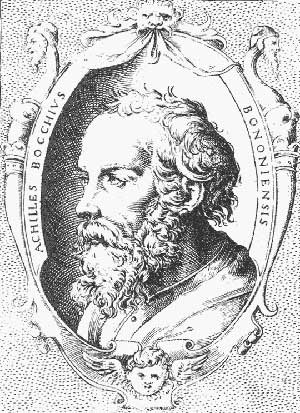
Morena introduces her compelling source material in the accompanying 4-sided leaflet. She describes the author of this monumental work Achille Bocchi (Achilles Bocchius) as an Italian humanist, author, emblematist, historian and lector in Greek who taught at the University of Bologna, but was best known for this book 'Symbolicarum Quaestionum de Universo Genere' (of 1555), which "takes as its subject the whole of universal knowledge: physics, metaphysics, theology, dialectic, Love, Life and Death, packaging them under the veil of fables and myths." She claims it is one of the most fascinating and renowned emblem books of the Italian Renaissance. Many of Bocchi’s symbols were reproduced and imitated, especially in esoteric books of the 17th century. Bocchi founded the famous Hermathena Academy (Hermes + Athena) with the aim of bringing together the greatest scholars of that period. The building where the academy was based still exists and is located in Via Goito, Bologna. Its façade displays two large inscriptions, one in Latin and the other in Hebrew, which at the time was considered highly controversial.
The creator of the illustrations in this book (from 1555) was Prospero Fontana, a Bolognese ‘mannerist’ painter who opened and ran an important art school in Bologna during this time.
Here are three examples of card descriptions from this deck's leaflet, with the corresponding images displayed below:
0 FOOL
Meanings:
In the card a woman and an angel appear to be following the Fool, who is directing the scene. The central figure however, maintains the power, as indicated by the globe she holds in her left hand, a symbol of the spiritual realms. However, she is getting carried away by the playfulness of the Fool who, among other things, holds an important symbol, a fan in the shape of a peacock's tail. The peacock is known as the bird of a hundred eyes, representing the stars, the universe, the sun, the moon, and the "vault of heaven." In ancient Greece, it was called the "Face of Hera," and represented the celestial splendor as an epiphany of the Great Goddess. Additionally, cauda pavonis is also the name of an alchemical phase in which a wide range of colors appear, just after the ‘Nigredo’ stage.
So the meaning is not to be fooled by false messages, nor by those who simplify profound themes, while turning them into superficial games. The angel on the left appears to warn the woman not to follow such an ephemeral messenger. In fact, the angel carries another kind of knowledge, depicted by the books placed on top of the pole, along with a priestly hat and two crossed swords, indicating power, dignity and supreme justice.
The teaching is not to lose sight of true wisdom and not to be deceived by the easiest path, while pursuing a challenging yet necessary quest. The angel represents superior knowledge for which one must not turn one's back.
 II HIGH PRIESTESS
II HIGH PRIESTESS
Meanings:
Sacred geometry respects precise measurements and proportions that carry the graphic expression of fundamental symbolism. The divine figure above appears to be holding a scepter and globe: his power over the earth. An angel is opening his arms downwards, where a demonic figure on a cloud is rising: this is the union of opposites. Good and evil are simply polarities that need to merge to activate a new and powerful energy. On the earth there are geometrical figures, for example the octagon, which represents the mediation between heaven and earth. The divine message is received via the hand the woman has turned upwards and is translated with the drawing compass, with which she is about to make a circle, (a form of perfection). If the square represents the earth, the circle depicts the vault of heaven. Heaven on earth and earth in heaven, "as above, so below", this is the work of the priestess.
VIII JUSTICE
Meanings:
'Prudentia circumspecta' is the allegory of this card. A woman rides a dolphin, a loyal animal and psychopomp, that is a guide in the world of the living and the realm of the dead. Each event is linked, as depicted by the necklace she wears, which has a heart-shaped pendant. It is about 'love', understood as Wisdom. Moreover, this heart has eyes and therefore induces one to perceive through the communication of feelings. The maiden holds a scale, which weighs a sphere and a cube on its two plates. The cube represents the Earth element, the active mind (4-square reality), while the sphere evokes the circle, or emotional, sensitive realms. Therefore, wisdom needs these two forces to be balanced. The woman turns towards the direction traditionally attributed to the past, while the dolphin swims towards the future. For this reason, past and future must merge in the present moment. Action must arise from experience (past), heading toward the future, while focused on the present.
More details about this deck:
The backs of the cards display a miniature version of the Title Card and are therefore not reversible (shared on this page). As with most Italian decks, the Justice card is number VIII and Strength number XI. The cards have Roman numerals and are titled in Italian (but should be easily recognizable to Tarotists). There is a narrow cream colored edging around the card images, with the deck's slightly textured matte art stock adding an appealing look and feel. The set comes in a sturdy, elegant cardboard box that has the title card attached on top and includes a signature card inside, numbered and signed by Morena Poltronieri. There is also a little silver Tarot charm dangling from inside the box set adding a nice touch to this delightful treasure of a deck. Please check out twelve of the card images below.





